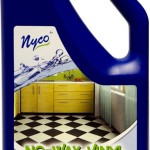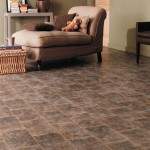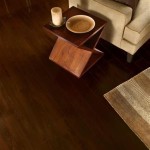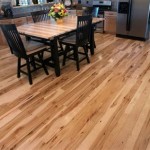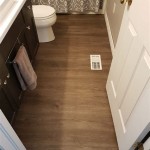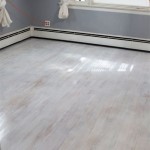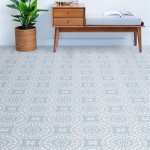How to Remove Scuffs From Laminate Flooring
Laminate flooring offers an attractive and durable alternative to hardwood, often at a more affordable price point. However, like any flooring material, laminate is susceptible to scuffs from everyday wear and tear. These scuffs, while often superficial, can detract from the overall appearance of the floor. Fortunately, removing scuffs from laminate flooring is generally a straightforward process that can be accomplished with readily available household items and a little patience. This article provides a comprehensive guide to various methods for effectively removing scuffs and restoring the beauty of your laminate floor.
Identifying the Type of Scuff
Before attempting any cleaning method, it is crucial to accurately determine the nature of the scuff mark. Not all marks are created equal, and different types of scuffs respond better to different treatments. A surface scuff, for example, is often simply a deposit of material left behind by shoes or furniture. These scuffs are usually lighter in color and easier to remove. Deeper scuffs, on the other hand, may have penetrated the protective layer of the laminate, potentially causing more significant damage. These may appear darker and require more aggressive cleaning techniques, or even professional repair in severe cases. A careful visual inspection, possibly with a magnifying glass, will help in distinguishing between these types of scuffs and determining the most appropriate cleaning approach.
It's also important to consider the source of the scuff. Knowing what caused the mark can provide clues about its composition and the best way to dissolve or lift it. For example, scuffs from rubber-soled shoes might respond well to a gentle abrasive, while scuffs from furniture legs could be removed with a solvent-based cleaner. Understanding the origin of the scuff allows for a more targeted and effective cleaning strategy.
Finally, always test any cleaning solution in an inconspicuous area before applying it to the visible scuff mark. This precautionary step prevents further damage or discoloration to the laminate flooring. Choose a spot such as inside a closet or under furniture to assess the cleaner's compatibility with the floor's finish. Wait for the test area to dry completely before proceeding with the cleaning process.
Gentle Cleaning Methods for Surface Scuffs
Often, the simplest solutions are the most effective. For light surface scuffs, start with the mildest cleaning methods and progressively increase the intensity only if necessary. This minimizes the risk of damaging the laminate flooring.
A damp cloth is often the first line of defense. Use a soft, non-abrasive cloth dampened with warm water. Gently rub the scuff mark in a circular motion. Avoid using excessive water, as prolonged exposure to moisture can damage the laminate. After wiping, immediately dry the area with a clean, dry cloth. This method is particularly effective for removing fresh scuffs and surface dirt.
If water alone is insufficient, try adding a small amount of mild dish soap to the water. Again, dampen a soft cloth with the soapy solution and gently rub the scuff mark. Ensure that the soap is properly diluted to prevent residue buildup. After cleaning, rinse the area with a damp cloth and dry thoroughly. Choose a dish soap that is pH neutral and free of harsh chemicals to minimize the risk of damage.
Another effective and gentle method involves using a pencil eraser. A clean, white pencil eraser can often lift scuff marks from laminate flooring. Gently rub the eraser over the scuff mark, applying light pressure. The eraser will crumble as it removes the scuff. Wipe away the eraser shavings with a clean, dry cloth. This method works well for scuffs caused by shoes or other materials that have left a deposit on the floor's surface.
For more stubborn surface scuffs, consider using a magic eraser. These melamine foam sponges are mildly abrasive and can effectively remove marks without damaging the laminate finish. Dampen the magic eraser and gently rub the scuff mark. Avoid applying excessive pressure, as this can dull the finish. After cleaning, wipe the area with a damp cloth and dry thoroughly. Always test the magic eraser in an inconspicuous area first to ensure compatibility with the flooring.
Addressing Deeper or More Stubborn Scuffs
When gentle methods prove ineffective, more targeted cleaning solutions may be necessary. However, caution is advised when using stronger cleaning agents to avoid damaging the laminate flooring. Always test in an inconspicuous area before applying to the affected area.
Baking soda paste is a mildly abrasive cleaner that can be effective for removing deeper scuffs. Mix baking soda with a small amount of water to form a thick paste. Apply the paste to the scuff mark and gently rub in a circular motion with a soft cloth. Avoid using excessive pressure, as baking soda can scratch the laminate finish. After cleaning, rinse the area thoroughly with a damp cloth and dry completely. The mild abrasiveness of baking soda helps to lift embedded dirt and remove stubborn scuff marks.
Mineral spirits, also known as white spirit, can be used to remove stubborn scuffs caused by adhesives, paint, or other sticky substances. Dampen a clean cloth with mineral spirits and gently rub the scuff mark. Avoid using excessive amounts of mineral spirits, as it can damage the laminate finish. Ensure adequate ventilation when using mineral spirits. After cleaning, wipe the area with a damp cloth and dry thoroughly. Mineral spirits are effective at dissolving oily or waxy residues that contribute to scuff marks.
Commercial laminate floor cleaners are specifically formulated to remove scuffs and stains from laminate flooring without damaging the finish. Follow the manufacturer's instructions carefully when using these cleaners. Apply the cleaner to a soft cloth and gently rub the scuff mark. After cleaning, wipe the area with a damp cloth and dry thoroughly. Choose a laminate floor cleaner that is pH neutral and free of harsh chemicals.
For very stubborn scuffs that resist all other cleaning methods, consider using a laminate floor repair kit. These kits typically contain a color-matched putty or filler that can be used to fill in the scuff mark. Follow the manufacturer's instructions carefully when using a laminate floor repair kit. Apply the putty or filler to the scuff mark and smooth it out. Allow the putty or filler to dry completely before walking on the repaired area. A laminate floor repair kit can effectively conceal deep scuffs and restore the appearance of the flooring.
Sometimes, the scuff is too deep or too extensive to be repaired with DIY methods. In these cases, it is best to consult with a professional flooring contractor. A professional can assess the damage and recommend the best course of action, which may include replacing the damaged planks.
Preventing Future Scuffs
Prevention is always better than cure. Taking proactive measures to prevent scuffs in the first place can significantly reduce the need for cleaning and repair. Simple preventative steps can greatly extend the lifespan and maintain the appearance of laminate flooring.
Using doormats at all entrances can help to trap dirt and debris before they are tracked onto the laminate flooring. Encourage family members and guests to wipe their shoes before entering the house. Regularly vacuuming or sweeping the floor can remove dirt and debris that can cause scuffs. Use a vacuum with a soft brush attachment to avoid scratching the laminate finish.
Placing furniture pads under the legs of furniture can prevent scuffs and scratches when moving furniture. Choose furniture pads that are appropriate for the type of flooring. Replacing hard casters on chairs with soft rubber wheels can also prevent scuffs. Avoid dragging heavy objects across the laminate floor.
Consider using area rugs in high-traffic areas to protect the laminate flooring from wear and tear. Choose rugs that are appropriate for the size and shape of the room. Regularly clean the rugs to prevent dirt and debris from accumulating and scratching the floor. By implementing these preventative measures, one can significantly reduce the occurrence of scuffs and maintain the beauty of the laminate flooring for years to come.

How To Fix Scratches On Laminate Flooring

How To Disguise Scratches And Scuff Marks On Laminate Flooring

How To Remove Scuff Marks From Laminate Flooring Liquidators

How To Remove Scuff Marks From Floor Maid Sailors

How To Disguise Scratches And Scuff Marks On Laminate Flooring

How To Fix Scratches On Wood Floors 11 Diffe Ways Hometalk

7 Tips To Help Prevent Scratches On Wood Floors Flooring

Any Tips For Fixing Scratches On A Laminate Floor Hometalk

How To Get Rid Of Scuff Marks On Hardwood Floors Jdog Carpet Cleaning Floor Care

How To Repair Laminate Flooring The Home Depot
Related Posts

